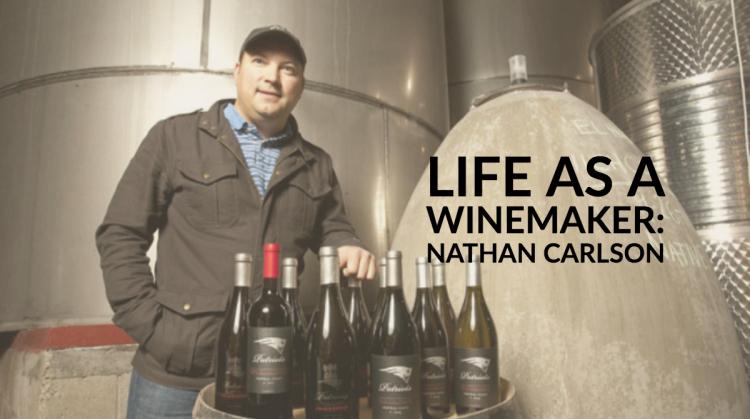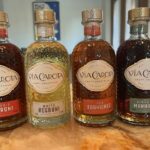After a decade of working with Center of Effort Wine, time seems to have passed quickly. “As I think back, we have accomplished so much in that time. Our wines have found a rhythm, we understand the estate and the land, and we have begun to make adjustments based on deep knowledge of this place,” explains winemaker Nathan Carlson.

Carlson joined Center of Effort in late June of 2010, when the winery had been under the new ownership of Bill and Cheryl Swanson. At his previous job, he oversaw winemaking for multiple brands in multiple facilities, and sourced grapes from growers from Lake County to Santa Barbara.
Center of Effort presented an opportunity to get back into the Edna Valley, a place that Nathan knows well. This new opportunity gave me the chance to be involved nearly from the beginning with a new winery, owners who were committed to quality and to connecting with their customers. Most importantly, after years of working broadly with vineyards and growers across the state, this was clearly an opportunity to develop a deep understanding of one single estate location; maximizing quality and efficiency from the existing vines and implementing solutions that made sense in our circumstances.
There were challenges ahead, and new wineries can be filled with uncertainty. “I had experience working with fruit from the established vines on this property.
I knew that there was potential for excellence here, if the details were attended to carefully. And in particular I knew that there would be growth and learning for me by working for someone like Bill Swanson,” says Carlson.
buy flagyl Canada https://langleyrx.com/flagyl.html no prescription
Early meetings with Mr. Swanson made it clear that he was direct, fair and that he had vast experience managing tens of thousands of people as the President and CEO of Raytheon. He approached and thought about things on a different scale than most people.
While working with the vineyards and wines, Nathan tried to understand what exists naturally, and draw on that strength rather than imposing any particular style on the fruit. The existing vines were planted in 1997, according to production standards of that time. From that first summer, the company paid close attention to soil, aspect and growth patterns.
In 2012 we implemented a major replanting of 8 acres to very high-density, high quality planting of additional Pinot Noir clonal selections, increasing the diversity of fruit available to our winemaking program.
From 2011, they enrolled in an audited sustainability program (SIP) that has been a useful metric to measure our longer-term goals for the vineyard and the business. They use very safe methods of crop protection, plant cover crops to minimize erosion and to feed the soil, return compost to the vines each winter to build organic matter in the soil, and track water use. Canopy management is a major quality and vine health issue in a cool foggy region, and they retrofitted the vineyard to make shoot management and leaf pulling easier for the crews. It is amazing to watch the soil come back to life; where it was previously a lifeless crust directly under the vines it now holds water and earthworms and smells clean and earthy.
“Our wines have been fortunate to receive acclaim right from the beginning. Our inaugural release of the Estate Pinot Noir was rated 95 points by a major wine publication, and that praise has been a consistent part of our story ever since. We have always made our mailing list customer/members our main focus, and present offers of the wines to them upon release and prior to the winter holidays. When we began to sell the wines in distribution, it was initially through our neighbor Lorraine Alban’s wine company – she and her team have been wonderful stewards of our wines, sharing them with businesses in our region and being mindful of what is best for us in the longer term,” says Nathan.
Over the past decade, CEOE has been constantly building and developing. Wells, water infrastructure, vineyard redevelopment, a solar field to provide all winery power, upgrading facility and winery equipment, additional fermentation and storage tanks, all-new presses, and high-quality grape receiving equipment all happened largely in the background, but boosted the efficiency and quality of their wines and vineyards.
Since 2016, the company undertook a multi-million-dollar wholesale renovation of the winery and grounds.
Prior to launching this renovation, COE didn’t have a comfortable place to host visitors to the winery. “I want COE to have a place that matches the wine quality” Bill Swanson, Owner of COE said many times during meetings.
“We thought about the design of the public spaces from the desire to provide genuine hospitality and ease to our guests, with small semi-private spaces to sit comfortably, large outdoor patios and gardens for events and winery parties, and all of it open to our unmatched views of the Santa Lucia mountains. The open kitchen with Chef’s bar has been a wonderful way to share culinary experiences with small groups of our members.
There truly is not another property like this in the region, and it is a special privilege to come to work here every morning,” adds Nathan.
COE is now an authentic ambassador for the Edna Valley. It is a magnificent place on the Pacific coast. Nathan started as the only employee of the business. “We had contractors and outside service providers, but it took time to assemble the right crew of people. And over time, we have had contributions from many amazing human beings who have built their experience with us at COE and eventually transitioned out into the larger world of our industry,” says Carlson.
COE’s close connection with California Polytechnic University and their Wine and Viticulture department has grown and bloomed to become a development ground for amazing talent that is moving into the industry.
“The Edna Valley AVA is a fairly small region; and because of that our voice may not have been as loud as others.
The wines from the Edna Valley tend toward elegance and longevity at their best, not bombast and hedonism, which tends to attract more attention. But members of our industry who have a broad understanding of the world of wine appreciate the quality potential and ascendency of the wines. I am ultimately looking forward to developing Center of Effort’s special strengths and to telling their unique story,” says Nathan.









